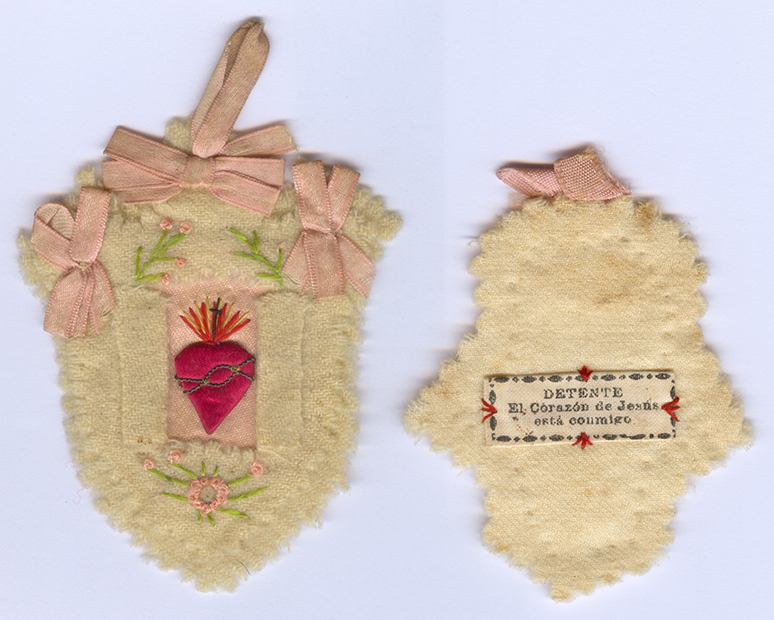Basque ethnography at a glance
Down through the years, items to ward off or provide collective protection against bad weather, dark enemies and their feared actions, along with the belief in divine punishments and spells of bad luck have existed in specific geographical areas or immediate social settings (family, friends, neighbourhood, dwelling, properties, etc.). Those items were placed at heights to protect the whole community (bells, crosses, shrines and their religious figures, trunks or trees, fires, etc.) or on abodes (hands, claws or paws, water, plants or vegetables, religious motifs, physical and painted crosses, or displaying the Sacred Heart, etc.).
As can be seen, there was a great variety of ways to protect or defend the individual. Thus, the cross is shown in its physical aspect: blessing crosses on bedsteads, on burial sites for eternal rest, and printed or carved on scapulars, momentos, devotional and decorative fabrics, relics and on many other items. This Christian and particularly Catholic hallmark is a religious piece (a reminder of the Passion of Christ of the promise of eternal life). That has led to a poplar conviction of its use to protect against dark beings and their possible evil actions against people, animals, properties and places.
Along with other components (fire, salt, and blessed oil, water and waxes), there were bells, rattles or amulets (kuttunak) at the start of the life cycle. Infants would wear them in their underwear or nappies and the items were crafted to avoid the “evil eye” (begizkoa). Stones (erroibenarri or zinginarri) were worn by the mothers during breastfeeding to soothe their hardened or cracked breasts. Special mention should be made of the beneficial virtues of reflections in mirrors, touching woods and throwing salt. Animal paws or claws and knots made in young people’s neckerchiefs were worn for luck. And then there were the offerings of light and food on the graves of their ancestors or the deceased.
There are also symbolic amulets such as crossing oneself or making a sign of the cross for the same purpose. In homes, we have seen the cross being drawn with the tip of the knife before cutting the loaf of bread and it was usual to make one with the poker in the embers of the hearth. A cross is marked on the forehead of the faithful on Ash Wednesday to remind them “you are dust and unto dust you shall return”. In turn, crossing oneself and genuflecting are seen as a sign of veneration or reverence, and also a gesture to defend oneself against the unknown. Furthermore, as a symbol or simple mention, they are also a real rite of passage to start or end the day or for special and specific activities. Then there is the religious use of ejaculatory prayers, supplications and intercessions. The sign of the horns, the “higa” or the “puya” [amulets against the evil eye] are used with the intent to protect against the forces of evil and profanely.
The deep-rooted and persistent struggle of human destiny among the three eternal visions – science, religion and magic – shows that it swings from one area to another. We just have to look around us at times of downfall or collective and personal crises. Fields of knowledge and experimentation – that have long converged or clashed – have sought to forge their dominance, captivated to set limits that seem to shift and be elusive. Where individuals and communities seek to preserve their comfort zone or the unchangeability of their ways of life. By avoiding possible upheavals to their daily life, livelihoods or means of belonging and not, therefore, begrudging resorting to a myriad of safeguarding or protection rituals.
Josu Larrinaga Zugadi – Sociologist



